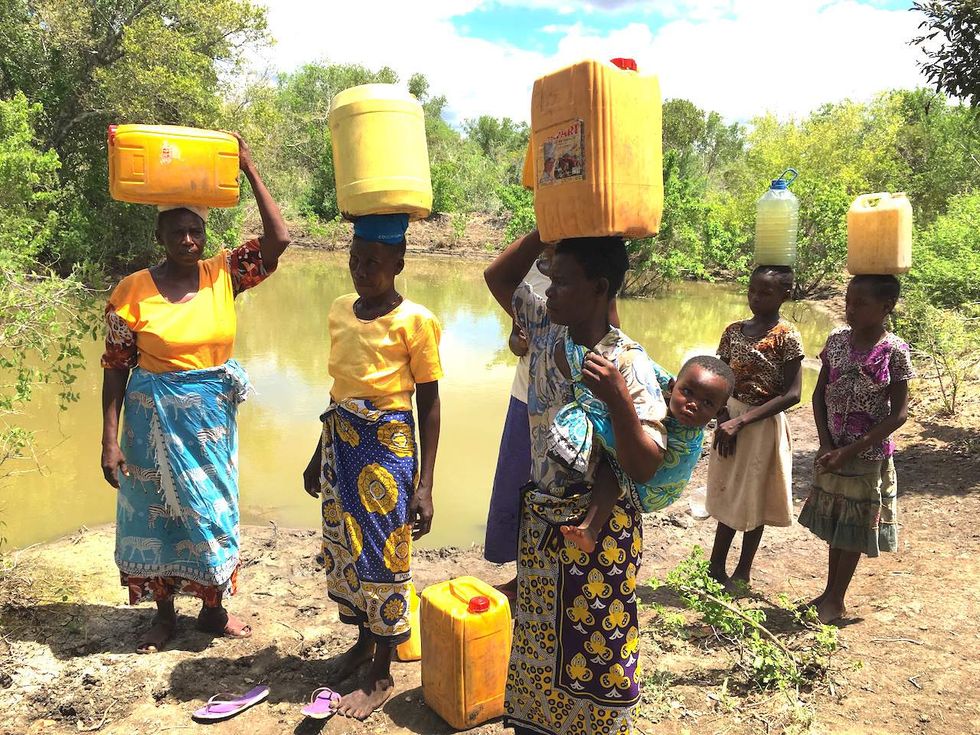
Girls in the developing world — including Africa — walk on average six kilometers per day just to fetch water, cutting into time they could be in school. (Kaitlyn Schallhorn/TheBlaze)

Editor's note: TheBlaze reporter Kaitlyn Schallhorn recently spent 16 days in Kenya reporting on issues affecting the lives of people in this African nation. Here is the third part of her series.
KILIFI COUNTY, Kenya — At 70-years-old, Halako Bashora cannot read or write.
Instead of attending school, Bashora — a mother of 15 and grandmother of 10 — spent her childhood walking for an entire day one way just to get to a water source, a trip totaling nearly 30 miles. Then, she’d fill up her jerry can, spend the night, and make the return trip home.
Speaking through two translators, Bashora told TheBlaze that, if she could go back in time as a young girl with access to water, she would have studied to become a doctor, helping pregnant women deliver babies.
Education in Kenya — including primary school — is a privilege, especially for girls who in many communities aren’t encouraged to stay in school as much as young men are.
Attending school was not an option for Bashora, and while her situation may be seen as an extreme case for some modern Kenyan families, a lack of water in close proximity does impact the education of a vast majority of young girls here.
Standing next to each other at a small pool of water, Jackline Chano and Mapenzi Kazungu look as though they could be sisters.
It’s the middle of a Wednesday afternoon, and the two young girls — ages 12 and 10, respectively — theoretically should be in school. But instead, they respectfully stand behind a group of young women who take turns filling their jerry cans with water from a pond several miles from Shibe Primary School where they both attend.
This expedition to collect water — or “fetch,” as Kenyans call it — is unusual. Normally, the two girls would set out after school to retrieve the water, but on this day, a special trek was arranged in order to show the three reporters just how far women in the Changojeni village must travel the bushes of eastern Kenya in order to obtain water.
Through a translator, Jackline told TheBlaze that the girls usually leave school in the afternoons to walk several kilometers home to pick up the jerry cans — a smaller version than the large, 20-liter yellow cans adult women carry atop their heads — and then walk several more kilometers to the water source.
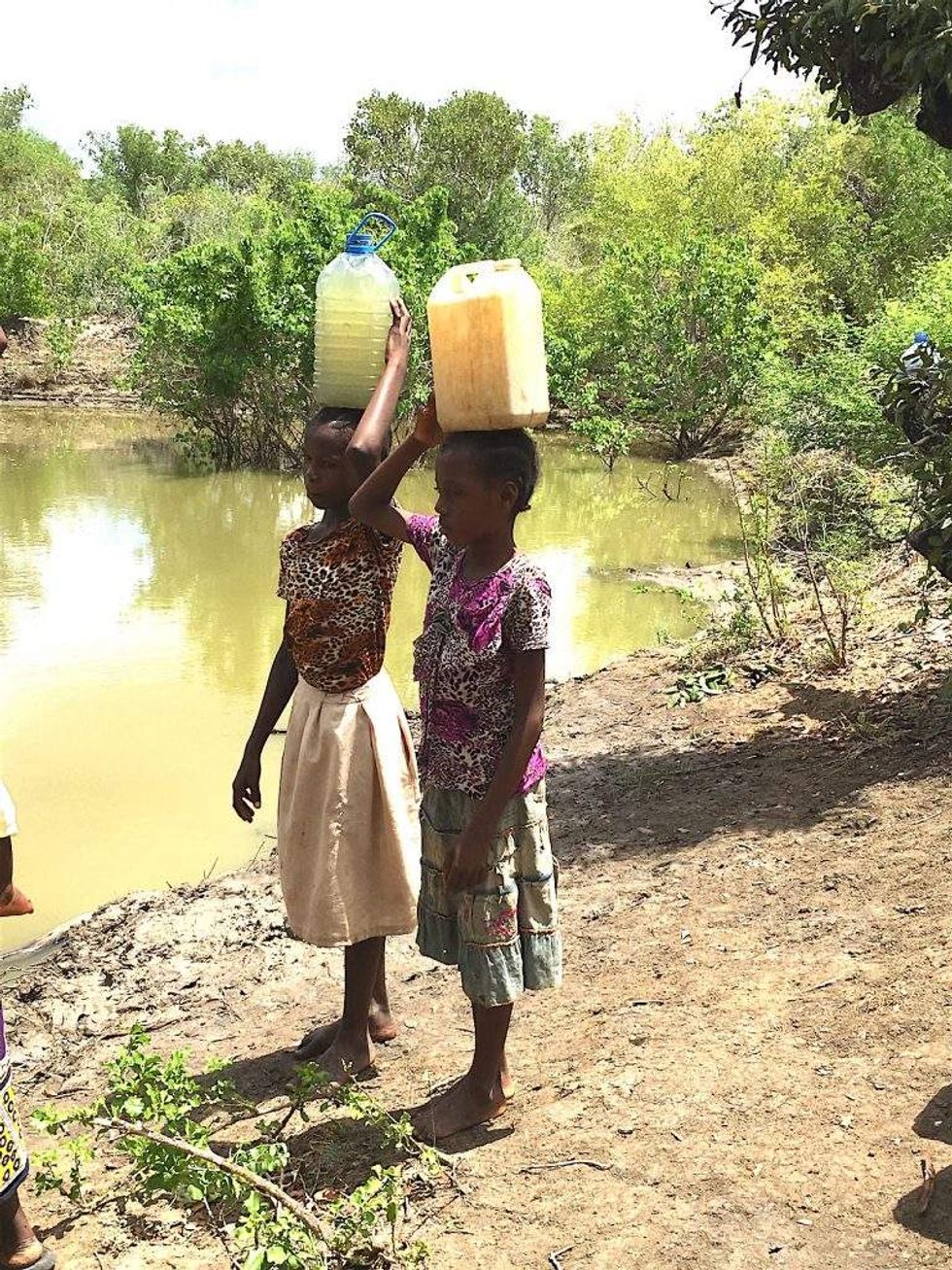
“After that journey, we feel tired,” said Jackline, who is in fourth grade.
Mapenzi, a third-grader, added that the girls attempt to finish most of their homework in school because there might not be enough light to see any unfinished work by the time they arrive home with water.
Those long, arduous afternoons take a toll on the two young girls, they said. Not only does it leave them tired and unready for school in the mornings, the heavy water jugs also cause soreness in their backs, legs, arms, and necks, the two girls said.
A lack of water can also impact a school’s population and retention rate, according to multiple interviews with educators at schools with access to water and without.
Alphonce Kadenge, a teacher at Shibe Primary for four years, told TheBlaze that his school shut down for about eight months in 2016 when students were not able to attend due to the scarcity of water in the area.
“The problem with this school is a lack of water,” Kadenge, a seventh-grade social studies teacher, said. “For about two years [a lack of water] has affected the community.”
Kadenge, 26, said the school used to educate 140 students, but that number has since dropped to 74 — and even then some students do not attend regularly because they have to find water. The nearest water source to the school, Kadenge said, is more than six miles away.
Shibe does collect rainwater from its roof, but Kadenge stressed that it is not enough. And with a drought in the area, he is not hopeful that the upcoming rainy season will provide much relief.
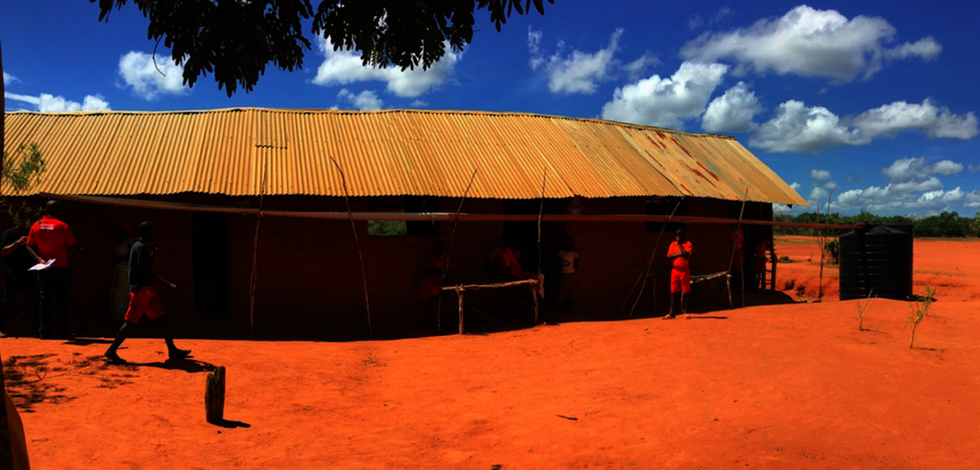
Daniel M. Malingi, the head teacher at Kambicha Primary school, told a different story. Since his school received a World Vision well on its grounds a couple of years ago, the primary school has grown from about 100 students to 251 students.
“More students came here after water,” Malingi, 57, told TheBlaze, adding that some students walk more than three miles now to attend the school.
“Having water has moved children from diseases to a disease-free environment,” he said.
Malingi said that his students are able to focus more on schoolwork because they “aren’t having to walk far away” to get water every day.
Both Shibe and Kambicha educates children up to eighth grade.
The water crisis in Kenya has not gone unnoticed by many nonprofit organizations in the country, and World Vision, an international humanitarian aid organization, has tackled the issue head-on, especially along the eastern coast, as the top provider of clean water in Africa.
To date, World Vision's area development project of Marafa — a settlement within Kilifi County — has drilled and equipped seven boreholes in the area, which benefits more than 70,000 people, according to the organization’s statistics.
World Vision Marafa has also installed more than 75 miles of water pipeline in the community in an effort with the Kenyan government to extend the flow of clean water throughout the extremely dry area.
But aside from just drilling the boreholes and leaving, World Vision also trains local people on how to maintain and repair the boreholes, although they can last up to 40 or 50 years, a World Vision staffer said.
“Girls in the developing world walk an average of six kilometers [3.7 miles] per day to fetch water. For many, every hour they spend walking for water is an hour they’re not in school,” Brian Duss, a World Vision aid worker, told TheBlaze. “That’s why we work so hard to be the number one provider of clean water to Africa.”
On April 6, members of the Chamari village in the Magarini constituency witnessed what many called a “miracle” as World Vision struck water with a new borehole in the area.
As water began to spout straight into the air, dozens of women chanted, cheered, sang, and danced in celebration. Many of the women had camped out for days in anticipation.
Agaya Wario Buru, 50, was one of the women who unabashedly rejoiced at the sight of outpouring of water into the air. As soon as the water began to flow, Buru ran toward the large rig with her arms raised, singing and dancing.
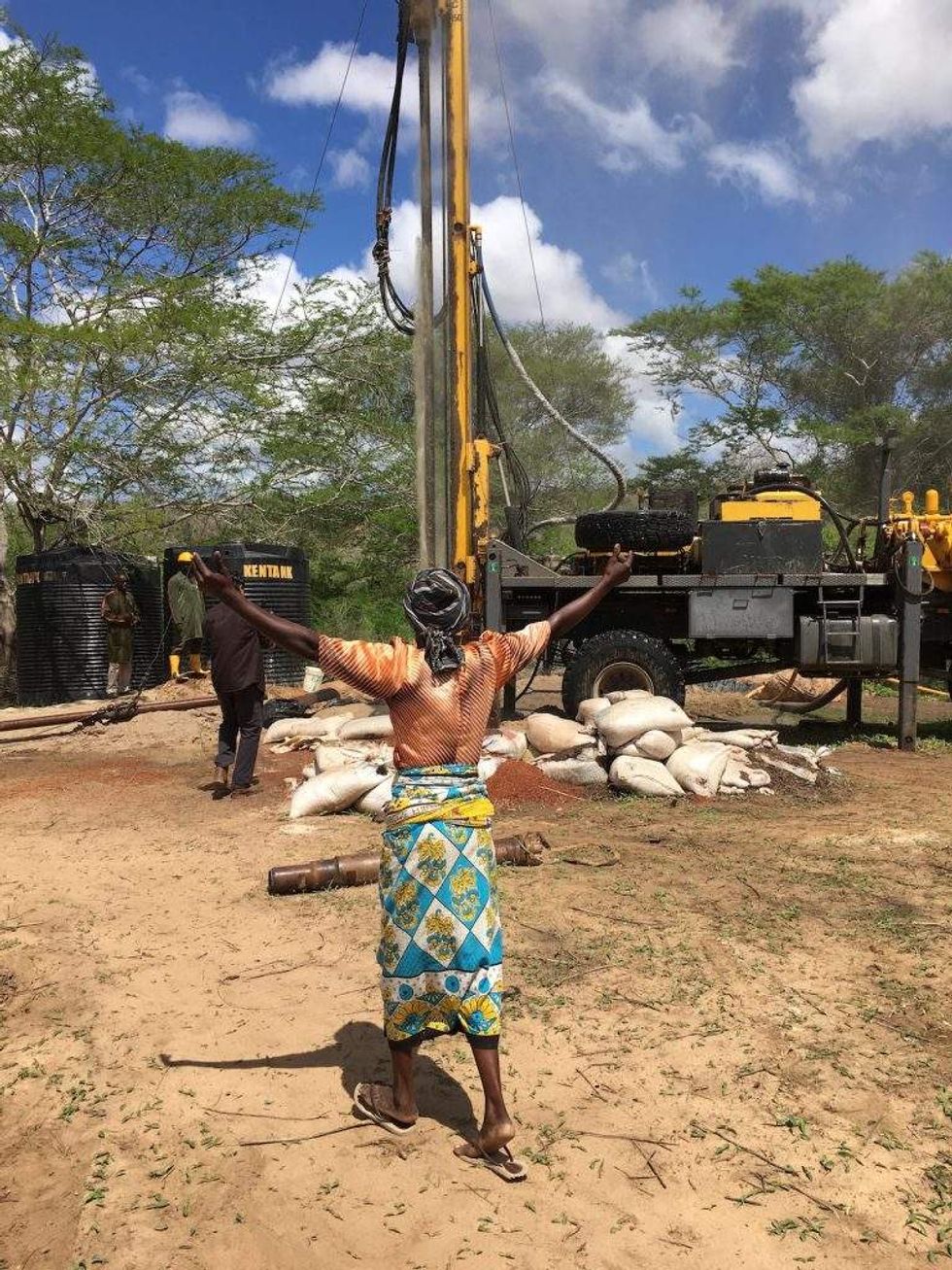
Through a translator, Buru told TheBlaze that she was unable to truly express the happiness she felt at the site of water. The nearest water source for her family was nearly 12 miles away.
A mother of three, Buru said her children and grandchildren will now be able to improve their sanitation and focus more on education — bettering their lives.
“Nothing is impossible with God,” Buru said. “God has given us water. Nothing is impossible.”
Thomas Makanga, the Kilifi County director of water affairs, said there are multiple areas within Kilifi that he called “crucial,” meaning the scarcity of water is overwhelming. But the new borehole in the Chamari village — once deemed a “crucial” area — will help alleviate the problem of accessibility.
“But the quality of water is not very good here,” he said of his county.
Makanga stressed that it’s the county’s responsibility to maintain the borehole and ensure the water gets to the community.
“The people of Chamari have used a lot of their precious time to find this precious commodity. So having this water near to them, the time gained is going to be used for other activities … which can gain them something,” Makanga said, affirmatively naming education as one of those activities.
World Vision estimates that in Marafa — which encompasses the Chamari village — only 64 percent of households have access to safe and potable water. And less than 24 percent of households are using the recommended water treatment technologies at home.
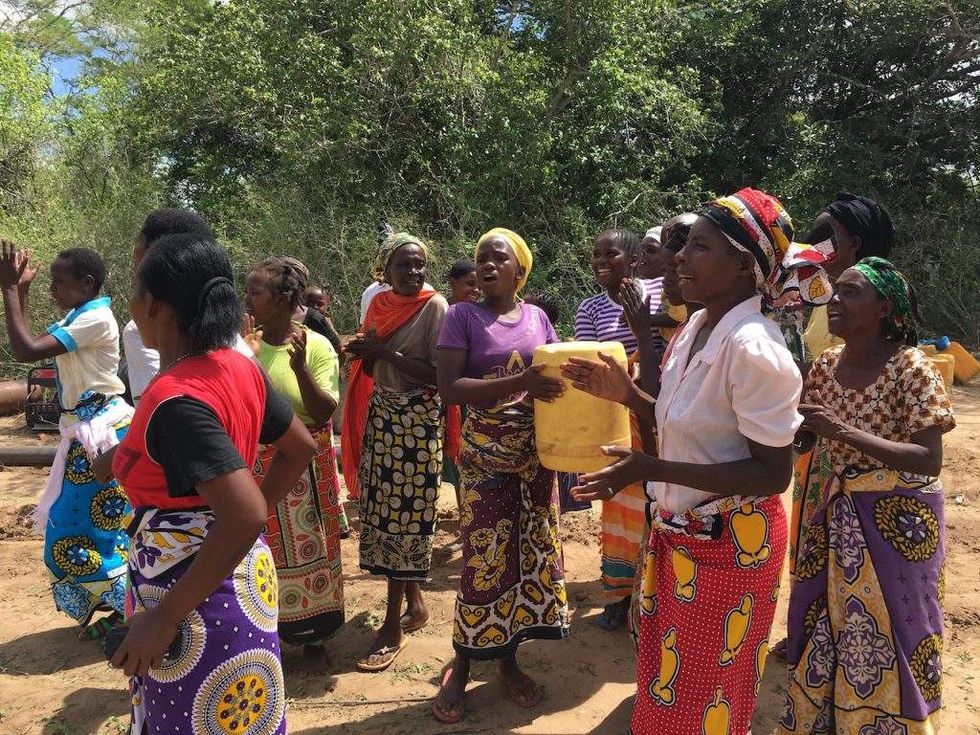
But World Vision isn’t the only organization bringing water to Kenya.
Rainbow Christian Missions, a Pittsburgh-based organization, has built more than 10 wells in western Kenya. These wells are often built on school grounds, which allows students, their families and the community to share in the clean water.
The nonprofit’s latest well at Eshibina Primary school, a public school in Mumias Sub-County, was nearing completion earlier this month. The nearest water source for these students was nearly half a mile away, with a steep uphill climb on the return trip — with the heavy water jerry cans.
Like World Vision, RCM staffers train local Kenyans to maintain and monitor the wells. But unlike World Vision, RCM wells are hand-dug and — without the drilling equipment World Vision has — not as deep.
RCM’s wells cost about $3,000 per project.
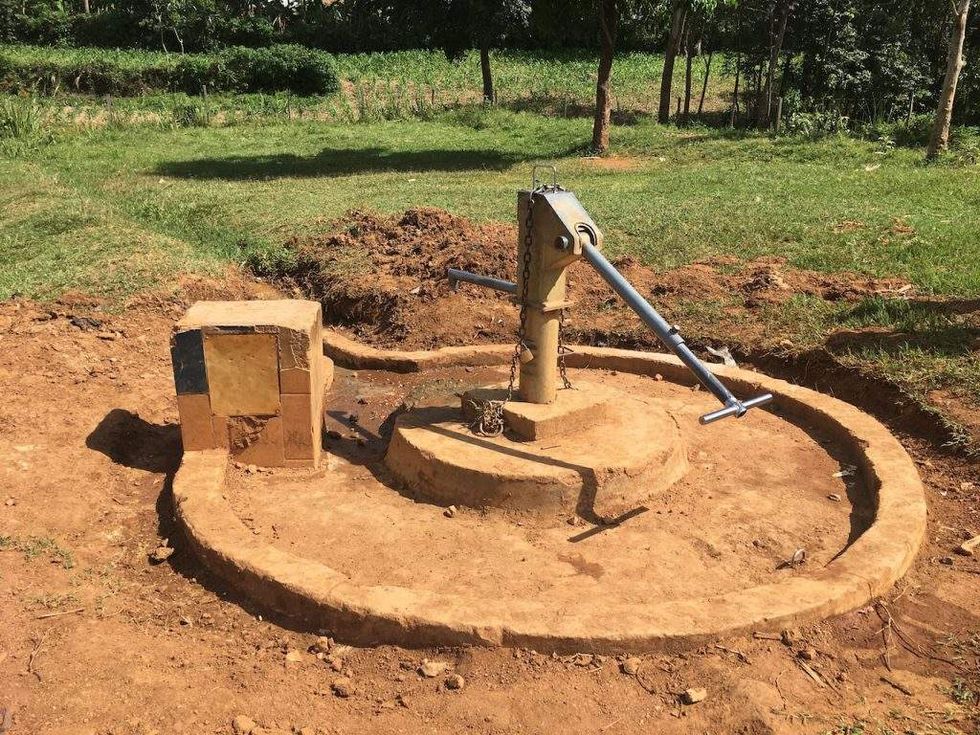
Once completed, a teacher at the school will be responsible for the well, including overnight as the school gates are shut and the pump is chained with a lock. RCM does not charge money for anyone to access the water and does not turn away anyone from the community.
Overseen by Dickson Warfune — who tends to hire people without an education and will teach them manual labor skills — wells take approximately three weeks to be completed. A team of five or six men will work Monday through Saturday to ensure the project is completed quickly — and correctly, he said.
Although the well at Eshibinia Primary was not yet completed during TheBlaze’s time in Kenya earlier this month, RCM founder Ruth Dietz was already scouting out the next location for her organization to break ground.
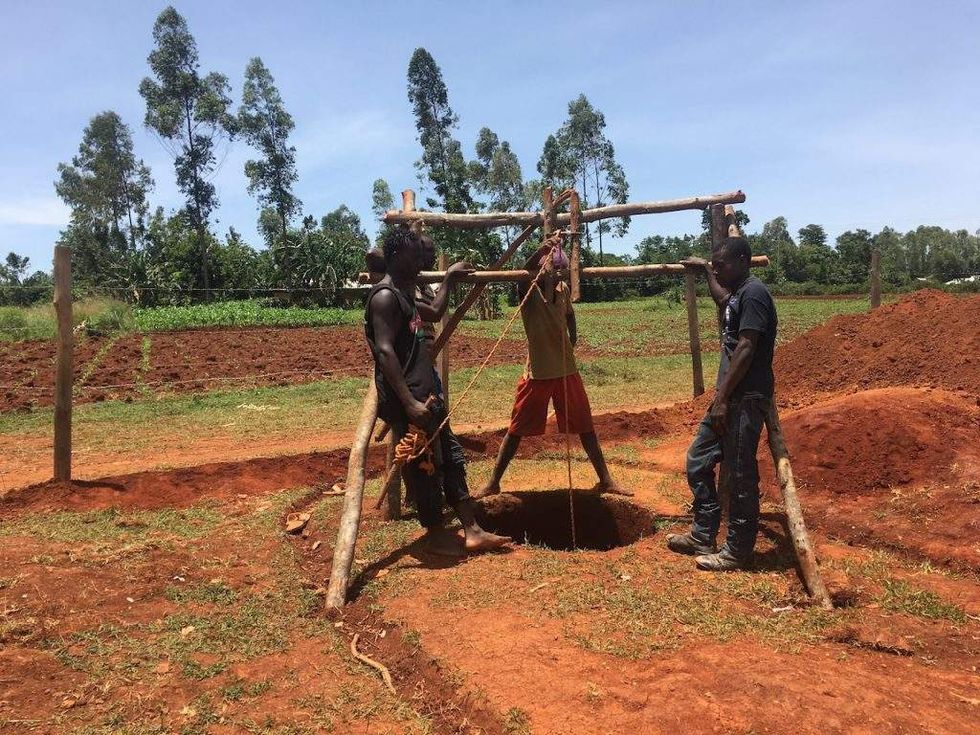
After celebrating with the rest of the Chamari community at the sight of water, Bashora spoke to reporters as she sat beneath the shade of a tree grove, surrounded by young women, many holding babies. Even without a translator, respect for the elderly woman was palpable.
But Bashora stressed to reporters how grateful she was to have water in her community now — a luxury that will help her daughters and granddaughters in a way she could truly appreciate.
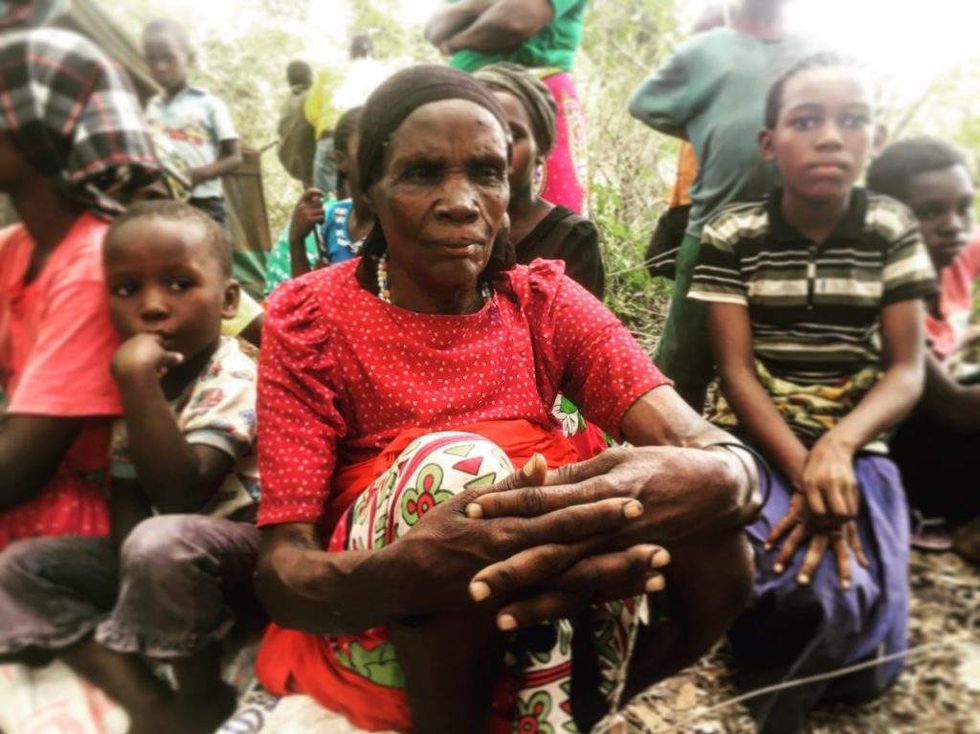
Through multiple translators — who translated her local Swahili dialect into Swahili and then into English — Bashora was able to convey her gratitude for World Vision’s latest project.
“I am very happy and feel that water is being poured on my soul,” Bashora said. “I had lost hope, but now I am elated because of the presence of water.”